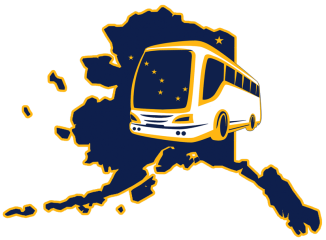Can you predict the Northern Lights?

Northern lights are recognized as one of the greatest tourist attractions in the Arctic and one of the world’s great natural wonders. Every winter, tourists from all over the world travel to Alaska, Greenland and other Arctic lands to admire the kaleidoscope of colorful night skies. Traveling to the Arctic Circle can be expensive, so if you’re planning a Northern Lights vacation, you might be wondering if it’s possible to predict the Northern Lights.
You can answer yes or no to this. Aurora activity can be monitored to some extent, but there is no guarantee that the aurora will occur on any particular night. This depends on weather, sunspot activity, and many other factors. Read on to learn more about how to predict the Northern Lights.
Can you predict the Northern Lights?

Aurora Borealis, also known as the Aurora Borealis, is a phenomenon caused by the interaction of the Sun and the Earth’s atmosphere. When the solar wind (particles emitted by the sun) collides with the Earth’s magnetic field, the effect is visible as colorful streaks in the night sky. This means that auroras are primarily dependent on solar activity. A more active Sun increases the chances of an aurora, making it more memorable and vivid.
Scientists have been able to pinpoint the cycles of solar activity by studying changes in the structure of the sun. After a century of high sunspot activity known as the Modern Maximum, the Sun entered a period of lower activity levels in 2008, according to astronomers. During this cycle of solar activity, known as a “minimum,” fewer waves of the solar wind are in contact with the Earth, making auroras less likely.
In addition to these longer-term cycles, scientists have identified 11-year cycles in which solar activity increases and decreases due to reversals in the Sun’s magnetic field. During the current waning period, solar wind emissions are minimal, making auroras less likely. The Sun is currently in the decline phase of this 11-year cycle, and the next peak in solar activity is expected to occur around 2025. This makes aurora much rarer.
That said, auroras are also frequent during the solar minimum. In other words, it is a relative story that the probability of occurrence is low and the scale is small compared to the maximum period of solar activity. NASA and other space agencies have developed tools that can monitor auroral activity by measuring solar activity, allowing us to predict auroras up to an hour in advance. These tools are freely accessible online and are valuable resources in aurora hunting.
Another factor involved in predicting auroras is the weather. Aurora Borealis can only be seen at night when there are no clouds, as clouds obscure the upper atmosphere. Many of the major aurora viewing spots are chosen primarily because of the limited cloud cover in winter. Even if an aurora occurs on a cloudy day, the clouds will block your view, so you won’t be able to see the aurora.
The easiest way to ensure that you can see the northern lights is to choose the times and dates when they are most likely to occur. This means that you will have to travel in the winter, as the Arctic in the summer months can’t see the Northern Lights due to the abundance of sunlight. Auroras can be observed regularly in the Arctic Circle from August to April. Aurora activity peaks during the equinox months of September and March, but in the far north, October through February is also a good time to see the lights, as there is plenty of darkness.
Another factor to consider is time of day. Aurora activity peaks between 11:00 pm and 2:00 am, when sunlight in the sky is minimal. This is why many tour operators bring their Northern Lights viewers at this time of day. However, as long as the sky is dark, you can always see the Northern Lights. Some people have seen the Northern Lights as early as 8:00 pm or 8:00 am depending on location.
That said, there is no perfect way to guarantee that the Aurora Borealis will occur on any given night. While you can maximize your chances of seeing the Northern Lights by choosing the right time/date and the right location, there are a number of factors that can get in the way. Most tour operators will admit this, but remember that if you stay in the Arctic for a few days, your chances of seeing the Northern Lights are extremely high.
summary

Many conditions must be met simultaneously for an aurora to occur, making it difficult to predict. There is no way to guarantee 100% chance that the aurora will occur on any given night. However, if you choose an ideal viewing spot with cloudless weather and visit during peak aurora viewing hours, you are almost guaranteed to see them during your trip to the Arctic.
